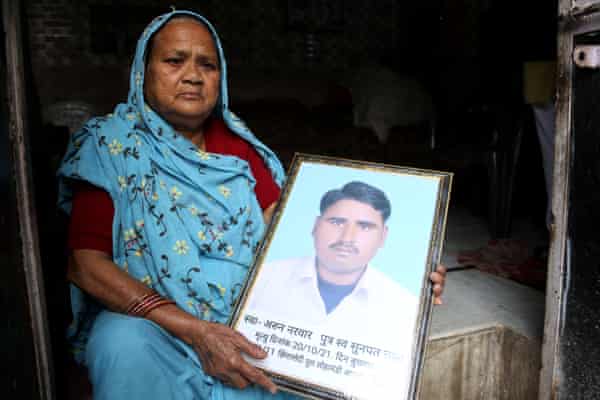US Centers for Disease Control withheld critical statistics on COVID-19 for more than a year
On Sunday, the New York Times reported that the Centers for Disease Control and Prevention (CDC) has been withholding the publication of critical data that could have helped local and state public health departments better target their responses to stem infections and protect lives.
Instead, they have been cherry-picking vital information to present an upbeat assessment of the state of the pandemic, which has only further endangered lives in the process.
The author of the report, Apoorva Mandavilli, wrote, “Two full years into the pandemic, the agency leading the country’s response to the public health emergency has published only a tiny fraction of the data it has collected, several people familiar with the data said.”
Omitted from publication included data on the effectiveness of boosters in adults under 65. Without the data, health experts had to turn to international sources such as Israel to recommend the third shot. However, Israel’s definition of severe disease differs from that used in the US. (In Israel, a person with rapid breathing and oxygen levels below 94 percent is considered to have a severe illness, while the CDC reserves that category for anyone who is sick enough to need hospitalization.)
Also, the social dynamics of the two countries—public health initiatives, state of the health care infrastructure, therapeutics, etc.—are dissimilar, meaning the best decisions can only be made by using real-time data available for the region.
The Washington Post, also reporting on the CDC’s remarkable negligence, said that on July 12, 2021, Pfizer scientists had met with senior US government health officials to explain that their rationale for booster shots was based on data from Israel that showed immunity to the vaccines waned quickly, especially among the elderly and immunocompromised. The CDC indicated their “data showed something quite different.”
The Post wrote, “Other senior health officials in the meeting were stunned. Why hadn’t the CDC looped other government officials on the data? Could the agency share it—at least with the Food and Drug Administration, which was responsible for deciding whether booster shots were necessary? But CDC officials demurred, saying they planned to publish it soon.”
A month later, reports published in the US corroborated the Israeli data.
It is more likely the CDC had siloed and forgotten the information, choosing to ignore its implications and leading to the backpedaling the Post describes. But it further confirms that the CDC has become deeply enmeshed in political decisions to control the flow of scientific information to the public. The deliberate intent is science conforms to policy rather than shaping it.
Other vital data left out that has only recently been published included information on hospitalizations and death by age and vaccinations status, including breakthrough infections rates that could have warned the public about the rapid decline in vaccine effectiveness.
Another glaring omission has been data derived from wastewater surveillance across the country that could identify emerging COVID-19 hot spots and new variants. It was more than a year ago the CDC had established its National Wastewater Surveillance System. Early this month, the agency added wastewater data to its COVID-19 trackers, providing a broad perspective on the surge of infections across hundreds of communities.
CDC spokeswoman Kristen Nordlund told the Times, “The agency has been slow to release the different streams of data because basically, at the end of the day, it’s not yet ready for prime time. [The agency’s] priority when gathering any data is to ensure that it’s accurate and actionable.”
The pandemic has demonstrated that the CDC cannot handle large volumes of data while operating under political oversight. There are grave dangers to the population when the premier public health authority is unable to provide timely and vital information on the status of this or any other epidemic.
Nordlund let it be known that the agency was reluctant to share efficacy information on the vaccines with the public “because they might be misinterpreted as the vaccines being ineffective,” the Times wrote. She also said that the data represented only a small percentage of the population, which is a devious attempt to sidestep the issue.
Epidemiologists and scientists frequently utilize limited but broadly applicable data to address critical and pressing questions. The CDC had no problem generalizing that COVID-19 had little impact on school-aged children using limited data obtained from a single school or district, much that is untenable even for the CDC.
These developments are significant. Hospitals are no longer required to report real-time data on COVID-19, specifically deaths, to the Department of Health and Human Services (HHS), relying on the CDC to update these statistics.
As children were facing a deluge of infections due to a concerted national effort to force teachers back to the classrooms and schools be opened regardless of the cost or impact on communities, the American Academy of Pediatrics (AAP), which has been substituting as a reliable source on COVID-19 infections among children, was repeatedly asking the CDC on the granular data relating to hospitalized children. They were told it was unavailable.
Since the pandemic began, according to the limited data available on the CDC’s COVID-19 tracker, at least 1,346 children have died. Those under five make up the largest subgroup, with 434 total deaths. According to the AAP, approximately 60 percent of all child deaths occurred in the last six months. Between January 25, 2022, and February 19, 2022, 219 children died, of whom 74 (one-third) were under five. By contrast, the influenza virus has killed fewer than five children in the last two years.
Early in the pandemic, several international studies pointed to the importance of schools and children as vectors of community transmission for the coronavirus. Many principled researchers and epidemiologists defied the official pretense that children were neither impacted nor very contagious when infected. Yet, the CDC has repeatedly taken the baseless position that children are “essentially immune to the disease” and has put children in harm’s way.
Dr. Yvonne Maldonado, chair of the AAP’s Committee on Infectious Disease, speaking with the Times, said she had also repeatedly asked the CDC for an estimate on the contagiousness of a person infected with the coronavirus five days after symptoms begin. She said, “They’ve [CDC] known this for over a year and a half, right, and they haven’t told us. I mean, you can’t find out anything from them.”
Due to the massive surge of infections caused by the Omicron variant, instead of calling for an immediate shutdown and the application of stringent mitigation measures, the CDC simply shortened their isolation period to five days, claiming there was a sound scientific basis for their decision.
In late December, when the guidance was issued, Yonatan Grad, an associate professor of immunology and infectious diseases at Harvard’s School of Public Health, declared, “To me, this feels honestly more about economics than about the science. I suspect what it will do is result in at least some people emerging from isolation more quickly, and so there’ll be more opportunities for transmission, and that, of course, will accelerate the spread of COVID-19.”
Later, a human challenge trial based in the UK, where healthy volunteers were purposely infected with the coronavirus to provide the basis for future studies to test new vaccines and therapeutics, found that symptoms started within two days. Viral load increased rapidly, peaking after five days. Many still had high levels of active virus 10 days, and some 12 days following infection. And yet, the CDC director told health care workers that they didn’t have to isolate if they had the sniffles. This week she claimed it was essential to give people a “break from masks” even as new subvariants of Omicron are accelerating in the US.
Aside from the death of hundreds of children, even the CDC has had to acknowledge the catastrophic loss of life sustained in the US over the last two years. More than 80 million have reportedly been infected. Over 960,000 have died from COVID-19. Excess deaths are 15 to 35 percent higher than the officially recorded COVID-19 deaths. Close to 2,000 people die each day of COVID-19, but even these horrific figures are in question. How many more deaths are we no longer tracking?
These revelations mean that the CDC and the head of the agency, Dr. Rochelle Walensky, are complicit in the deaths of hundreds of thousands of people.


/cdn.vox-cdn.com/uploads/chorus_image/image/70531416/1358939134.0.jpg)












